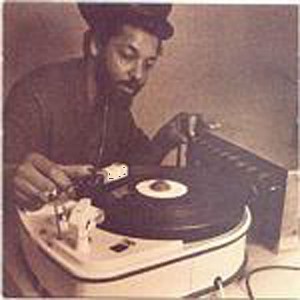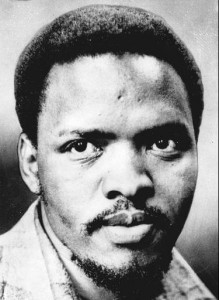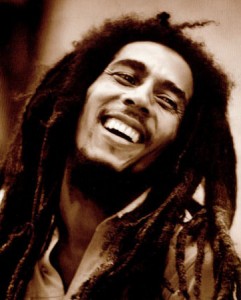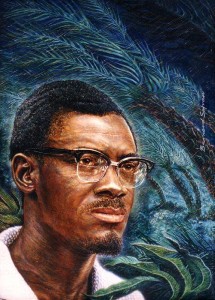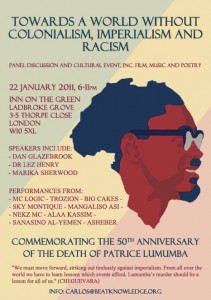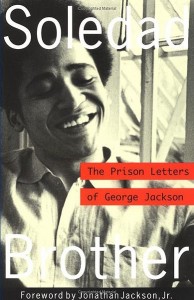From Doo Wop to Hip Hop: The Bittersweet Odyssey of African-Americans in the South Bronx
- September 27th, 2012
- By agentofchange
- Write comment
Brilliant article by Mark Naison. Source.
I
Sometimes, music can be a powerful tool in interpreting historical events. Played side by side, two of the most popular songs ever to come out of the Bronx, the Chantals’ “Maybe” and Grandmaster Flash and the Furious Five “The Message,” dramatize an extraordinary shift in the culture, dreams and lived experience of African-Americans in the South Bronx between the mid 1950s and the early 1980s. These songs, so different in tone, content and feeling, were produced by artists who lived less than six blocks away from one another in the Morrisania Section of the Bronx, an important center of musical creativity in both the rhythm and blues and hip hop eras.1The Chantals, the most successful “doo wop” group ever to come out of the Bronx, and one of the first of the “girl groups” ever to have a hit single, grew up singing together in the choir at St. Anthony of Padua elementary school located on 165th Street and Prospect Avenue. Their song “Maybe” appeared in 1957, a time when many African-Americans in the Bronx were having a modest taste of post-war prosperity and were optimistic about their futures. Throughout the neighborhoods of the South Bronx they inhabited, new housing developments were going up at breakneck speed, allowing thousands of black and Latino families to move into clean airy apartments, with ample heat and hot water, which were a step up from the tenements many of them lived in when they first came to New York. They lived in a neighborhood where most families were intact, where children received strong adult guidance in their home, their block, and their school, and where adolescent violence was rarely life-threatening.
Grandmaster Flash, one of three pioneering Bronx DJ’s credited with founding hip hop, also grew up in Morrisania (at 947 Fox Street, right off 163rd Street), but it was a very different Morrisania than the one the Chantals grew up in. When Mel Melle, the MC for the group, sang “Broken glass, everywhere, people pissing on the street, you know they just don’t care” to a pounding, rhythmic backdrop, he was talking about a community buffeted by arson, building abandonment, drugs, gang violence, shattered families, the withdrawl of public services and the erosion of legal job opportunities. Surrounded by tenement districts that been ravaged by fires, housing projects that were once centers of pride and optimism had become dangerous and forbidding: “rats on the front porch, roaches in the back, Junkies in the alley with a baseball bat.” This was the world in which hip hop was created, a world where government was distant and remote, families were under stress, adult authority was week, and young people had to find economic opportunity and creative outlets on their own in the most forbidding of circumstances.
How did this happen? How did the harmonic, optimistic environment evoked by the Chantals, the Chords (who came out of Morris High School), or Little Anthony and the Imperials, give way to the violent, danger-filled world described in clinical detail by the Furious Five and, several years later, by another brilliant South Bronx hip hop lyricist KRS-1? And how did people respond to these community-destroying forces? Did they give in? Leave? Try to resist? If they did resist, how effective was their resistance?
These are some of the issues that I will try to address in this article. Please keep in mind that what I am sharing with you is the product of preliminary research. A little more than a year ago, the Bronx Historical Society and the Department of African and African-American Studies at Fordham came together to launch the Bronx African-American History project, an effort to document the experience of the more than 500,000 people of African descent who live in the Bronx. I decided to focus on the generation of African-Americans who moved to the South Bronx from Harlem, the American South and the Caribbean during and after World War II, the generation of people Colin Powell has written about in the early chapters of his autobiography An American Journey.2
I began interviewing members of that pioneering generation and in the process came across a remarkable group of people who grew up in the Patterson Houses, a 17-building development bounded by Morris and Third Avenues and 139th and 144th Streets. These individuals, who come together every July for a Patterson Houses Reunion, are successful professionals in education, business, and the arts who remember the Patterson Houses as a safe nurturing place from the time it opened in 1950 until heroin struck in the early ‘60s. Their story, which challenges so much of what people think about public housing, the South Bronx, and Black and Latino neighborhoods, is one that I am going to recount not only because of its intrinsic value, but also because it helps us understand the events that follow.
Based on interviews and long discussions with Victoria Archibald Good, Nathan “Bubba” Dukes, Adrian Best, Arnold Melrose, Joel Turner, Michael Singletary, Marilyn Russell and Allen Jones, I am going to bring back a time when public housing was a symbol of hope, not failure, and when working-class Black and Latino families, supported by strong, well funded government services, helped each other raise their children with love, discipline, respect and a determination to achieve success in school, athletics and the arts. And though this story is about Patterson, the atmosphere it evokes also existed in the Melrose, St Mary’s and Forest Houses, the other large developments that opened in the South Bronx in the late 1940s and early ‘50s.
II
One of the first things that grabbed my attention when I began doing interviews was that African-American families who moved into the Patterson Houses saw their arrival there as a “step up” from the crowded tenement neighborhoods where they had been living. Vicki Archibald, whose parents moved to Patterson Houses from Harlem, recalled: “There wasn’t a lot of affordable housing. I am not sure how long my parents were on the waiting list for public housing, but I do remember my mother saying they were living in one room in my grandmother’s apartment before we moved…. By the time we moved from Harlem to the Bronx, I was born, my brother Tiny was born, and my mother was pregnant win a third child.”3 Nathan Dukes, whose family moved from a crowded building in the Morrisania section of the Bronx where his father was superintendent, recalled: “It was basically like a migration, where people moved from the Tinton Avenue/ Prospect Avenue area over into the Patterson Houses… The projects were relatively new and they were accommodating.” The new residents, Dukes claimed, took tremendous pride in their surroundings. “Outsiders could not come into the Patterson Projects if we didn’t know them,” he remembered. “A lot of the older guys would question anybody who didn’t look right who came into the projects late in the evenings.… They were basically patrolling.… They would walk around the neighborhood … making sure things was ok.”4
When the project first opened, children who lived in Patterson experienced a level of communal supervision that is difficult to imagine today. The families who lived in the development, 90% of whom were Black and Latino, took responsibility for raising one another’s children. Not only did they help one another with babysitting and childcare, they carefully monitored the behavior of young people in hallways, from apartment windows and project benches, making public spaces in the huge development anything but anonymous. “You couldn’t get away with anything,” Nathan Dukes recalled “The moms and the pops, … they’d be out on the benches…. If you went in the wrong direction, by the time you came back, everybody in the neighborhood would know. And that was it…. You’d get a whooping.” Vicki Archibald, who fondly recalled the “camaraderie and supportiveness and nurturing” she got from people who in her building “who weren’t blood relatives,” also remembered that people were quick to correct one another’s children. “They did not hesitate to speak to you about dropping garbage in the hallway or talking too loud or skating in the hallway. All a neighbor had to do say ‘Don’t let me tell you mother’ and that’s all it took for us to come back go reality.” Even childless people got in the act. Vicki remembered a “Miss Charlie Mae” who used to “stand in that hallway, sit by the window, or on the bench and everybody knew what was going on in 414.”
This communal investment in child rearing was reinforced by publicly funded programs that provided children in the Patterson Houses with an extraordinary array of cultural and recreational opportunities. As Josh Freeman points out in his landmark book Working Class New York, residents of communities like Patterson Houses were the beneficiaries of a remarkable campaign by the city’s postwar labor movement to have government invest in education, health care, recreation and youth services for working class families.5 Children growing up in Patterson in 1950s had round-the-clock supervised activities in a community center housed in the local elementary school, PS 18; had first rate music instruction from teachers at the local junior high school; went on summer field trips to zoos and museums; and got free medical exams, vaccinations, and dental care in schools and in clinics. The experience made children in the projects feel at home in all of the city’s major cultural sites. “We had a vacation day camp, every summer, for children in the projects,” Vicki Archibald recalled. “We went to every single museum you could think of, to Coney Island, to baseball games, to the planetarium… We went to Prospect Park, the Bronx Zoo, the Botanical Gardens.… I don’t think there was one spot in the city we didn’t cover.”
These programs were headed by teachers and youth workers who took a deep interest in the welfare of Patterson’s children and were in regular communication with parents, reinforcing the communal investment in the neighborhood’s young people. Nathan Dukes and Adrian Best both speak with reverence of the instruction and guidance they received from “Mr. Eddie Bonamere” the music teacher at Clark Junior High School, who headed the school’s band. At that time, Clark, like most New York public schools, allowed students to take instruments home over the weekend, and Bonamere, a talented jazz pianist, used this opportunity to train hundreds of youngsters from Patterson to play the trumpet, trombone, flute and violin. Bonamere’s extraordinary influence on his pupils—Nathan Dukes referred to him as the “love of my life”—was reinforced by his determination to expand the cultural horizons of everyone living in the neighborhood. At the end of every summer, Dukes recalled, Bonamere would sponsor a jazz concert in the schoolyard of PS 18 that included famous musicians like Willie Bobo, and “everyone, I mean the entire projects, would be there.”
Supervised sports programs in the Patterson Houses were, if anything, even more visible and influential. The Community Center at PS 18, which was directed by the former CCNY basketball star Floyd Lane and ex- Knickerbocker Center Ray Felix, was kept open on weekends, holidays, and weekday afternoons and evenings. Not only did children have a chance to play knock hockey and checkers, do double dutch and play in organized basketball leagues, they had an opportunity to watch some of the greatest African-American basketball players in the nation play in the Holiday basketball tournaments that Lane sponsored. Players like Wilt Chamberlain, Meadlowlark Lemon, Tom Thacker, and Happy Hairston showed up on the PS 18 court. Similar programs existed in other South Bronx neighborhoods. Nat Dukes joined a community basketball program headed by Hilton White at a public park near Prospect Avenue, and played on a softball team called the Patterson Knights that was coached by a Burns security guard who lived in the Patterson Houses. Because of this array of sports programs, many young people who grew up in Patterson had successful careers in high school, college and professional athletics, and one of them, Nate Tiny Archibald, became one of the greatest point guards ever to play in the NBA.
This portrait of a time when Black and Latino children in the Patterson houses experienced strong adult leadership in every dimension of their lives so challenges the standard portrait of life in public housing that you might find it hard to believe. Wasn’t the South Bronx in the ‘50s the home of numerous street gangs, you might ask? Weren’t its neighborhoods filled with illegal activities and a strong underground economy?
The answer to both of these questions is yes. Most of the people who lived in the Patterson Houses were poor, and gang fighting and the underground economy were part of their lives. But except in rare cases, neither gangs nor illegal activities led to deadly violence. Boys in the Patterson Houses were constantly fighting kids from other neighborhoods and other projects, but most of the fighting was done with fists, and adults in the projects would step in if knives or zip guns became involved. The underground economy was huge, but its primary manifestation was the numbers and the major numbers entrepeneur in Patterson, Mr. Clay, carried himself more like a community banker than a thug. A “major donor in the church” and a sponsor of the community softball team, Mr. Clay dressed formally, did his entire business in his head, and never worried about being robbed by his customers, even though he always carried hundreds of dollars in his pocket. Even those who acted outside the law seemed to operate within a powerful communal consensus.
This remarkable period in the life of the Patterson Houses, which lasted less than fifteen years, rested on a number of intersecting factors which would not exist in public housing after the mid-‘60s. First, families were intact. All the families with children that moved into Patterson in the ‘50s had two parents present. Second, the local economy provided plenty of jobs for men with high-school educations and less. Many of the men in the Patterson Houses worked in factories and small shops located in the South Bronx. Dukes’s father was a furniture assembler; other men worked in milk bottling plants or small metal shops. Third, schools and community centers near the Patterson houses offered an impressive array of day camps, after-school centers, and sports and music and arts programs that offered round-the-clock supervision and activity for young people in the projects. Fourth, and most importantly, most Patterson residents had a sense, reinforced by public policy and lived experience, that life was getting better, that people heading families were living better than their parents had, and that their children were going to do even better than they had.
III
In the 1960s the comfort and security of people living in the Patterson Houses was to be cruelly shattered by a number of forces, creating an environment ruled by fear and mistrust, in which children were too often forced to raise themselves. What changed? When people who grew up in Patterson try to explain why the environment that nurtured them fell apart, the two things they mention are heroin and the fragmentation of families.
For both Vicki Archibald and Nathan Dukes, it was heroin use, which reached epidemic proportions in the early and mid-1960s, that did the most to erode bonds of community and trust in the Patterson Houses. All of a sudden, young men who were bright, popular and ambitious were transformed into dangerous and disoriented individuals who wouldn’t hesitate to rob their neighbors or families to get their next fix. Vicki Archibald, whose best friend’s brother was the first person she knew to get hooked, saw heroin strike with the force of a “major epidemic.” “For the first time,” she recalled, “I was starting to feel fear, not only for myself, but for the whole community…. It was so completely different that it felt that I was living in a dream…. All of a sudden, everyone in the projects is talking about break-ins … saying these were inside jobs, that somebody was letting these folks in to burglarize people’s apartments. Then I started hearing about folks that I grew up with getting thrown off rooftops because they were dealing.” Nathan Dukes remembers heroin hitting with the force of a flood: “there was just an abundance, it came out of nowhere…. People that you thought would not become involved in narcotics became involved on a very heavy level.” Dukes recalled being “devastated,” during his first year in college, by the news that one of his best friends “had just gotten shot and killed while robbing a jewelry store.” By 1965 and 1966, Archibald recalled, she didn’t feel safe walking back from the subway by herself at night. The Patterson dream had become a nightmare. “Here I was in this huge housing complex and there was a story every day about somebody who OD’d or was thrown off a roof…. So yes, it was a troublesome time for most of us.”
The impact of heroin on the Patterson community was so traumatic that Nathan Dukes remains convinced it was part of a government conspiracy to weaken the civil rights movement; but there were other forces eroding the community in the mid-‘60s that would have a lasting impact on the projects and the neighborhood. The fragmentation of families also contributed to the atmosphere and disorder. During the early and middle ‘60s, Dukes recalled, more and more fathers began to desert their families, frustrated by their inability to support their wives and children at a time when the factory jobs they worked at were beginning to leave the Bronx. During those same years, housing projects began to relax their admissions standards and open their doors to families on welfare, many of them recent migrants from Puerto Rico or the South or refugees from urban renewal projects in the rest of the city. As a result of both these developments, the adult male presence in the projects, which had helped keep gang behavior and teenage violence under control, began to diminish sharply, leaving public space under the control of drug dealers, junkies and teenage gangs.
The resulting violence and chaos led to a gradual exodus of families that had managed to resist these corrosive forces, most to the West and North Bronx. As a result, sections of the Bronx which had once been primarily Jewish, Irish and Italian, such as Morris Heights, University Heights, South Fordham, and Williamsbridge, began to experience a rapid increase in their Black population, while the housing projects of the South Bronx increasingly became places for those too poor, or troubled, to escape to safer areas. The exodus increased further with the wave of arson and disinvestment that spread through Melrose, Mott Haven, and Morrisania in the early 1970s, and later spread into Highbridge, Morris Heights and Crotona, exacerbated by a city fiscal crisis that led to dramatic cuts in public services. By the late 1970s, when the Bronx had become an international symbol of social decay, it would have been impossible for most people to imagine that housing projects in the South Bronx were once safe and nurturing places where children were watched over in every portion of their lives and exposed to the best cultural opportunities the city had to offer.
IV
In this moment of decay and despair, an improbable cultural movement would arise among young people in the South Bronx, West, and East Bronx whose creative impulses were integrally linked to the atmosphere of social breakdown that surrounded them. That movement was Hip Hop. Its unique styles of dancing, visual arts, and musical expression were created in the Bronx in the face of skepticism, indifference and occasionally hostility from adults inside and outside those communities. In fact, a good argument could be made that it was the breakdown of social order and adult authority that made this form of artistic innovation possible, especially in the formative years when hip hop had no commercial viability. The music writer Nelson George offered the following ironic observations of how the music fit the times:
The New York that spawned hip-hop spit me out, too. I came of age in the ‘70s…. But I’d be lying if I told you the ‘70s were a time of triumph…. It was, at times, a frightful experience to walk the streets, ride the subways, or contemplate the future…. But in chaos there is often opportunity, in pain a measure of pleasure, and joy is just a stroke or two away from pain. The aesthetic industry now known as hip hop is a product of these blighted times, a child that walked, talked and partied amidst negativity.6
Hip hop developed at a time when the adult presence in the lives of young people in the Bronx had radically diminished. Not only had informal supervision by family members and neighbors become far less significant, but music instruction had disappeared from the public schools, parks and recreation staffing had been cut in half, afternoon and evening programs in the schools had been eliminated, and sports programs had been cut to the bone. More and more, young people had to bring up themselves, and the result was that gangs in the Bronx had become far larger and more violent than their ‘50s counterparts, rates of violent crime had quadrupled, and the underground economy had come to replace the legal economy as a source of employment for youth. Along with gang activity came radical politics: in the late ‘60s and early ‘70s, more intellectually inclined Bronx youngsters were gravitating to the Black Panther Party and the Young Lords, the Nation of Islam and the Five Percenters; to community action groups seeking to wrest political control of the Bronx from its Irish, Jewish and Italian leadership; and to Black and Puerto Rican studies courses on the CUNY campuses. Along with the gangs, drugs, disinvestment and crime, race-conscious political activism, reinforced by open admissions in the City University (perhaps the greatest achievement of the ‘60s Left in New York City), was part of the unique chemistry that created Hip Hop as a cultural movement.
The birth of Hip Hop as a distinctive music form can be traced to the year 1973, when a Jamaican immigrant nicknamed “Cool DJ Herc” began holding parties at the community center in his building 1520 Sedgwick Avenue in the Morris Heights Section of the Bronx. At that time, you could not hold a party in the Bronx without being concerned about which of the gangs would show up and how they would respond¾particularly the Savage Skulls and the Black Spades. Competition among gangs for territory and prestige dominated public space in many parts of the Bronx, with neither a police force (decimated by fiscal crisis) nor local adults able to control their activity. In addition to fighting, the competition had begun to take the form of graffiti writing and dancing, with gang members at clubs trying to outdo each other in launching acrobatic moves on the dance floors of clubs and parties they attended.
The innovation that Herc inaugurated was to to take music that was no longer played on mass market radio (particularly heavily rhythmic music by James Brown, Sly and the Family Stone, and George Clinton), use incredibly powerful speakers to accentuate the bass line, and use two turntables so that the most danceable portions of the record¾the break beats¾could be played in consecutive order. The result was a sound that drove dancers wild and turned the competition on the floor between gang members into high theater.
What soon became known as “break dancing” described the increasingly acrobatic moves that took place at Herc’s parties at the Sedwick Community Center, which people all over the Bronx flocked to see. Soon, Herc was moving his events outdoors by hooking up his sound system to streetlights, and thousands of people were starting to attend them. He eventually found a commercial venue for his shows at “Club Hevalo” on Jerome Avenue between Tremont and Burnside. By 1974 and 1975, Herc’s style of dee jaying had started to spread through other neighborhoods of the Bronx and connect with traditions of toasting and boasting long established in black communities. To add variety to his shows and stir up the audience, Herc began to allow one of his partner dj’s, Coke La Rock, to “grab the mic and start to throw out his poetry.” This innovation was so successful that Herc added other “MCs” to his shows, and they soon began to compete in how well they could stir up the crowd. This, some people say, is where “rapping” (long a respected art in black communities) became a part of Hip Hop.
While Herc blew up in the West Bronx, even establishing a major venue right next to Fordham University at PAL Center on 183rd Street and Webster Avenue, a former gang leader from the Bronx River Houses in Soundview who called himself Afrika Bambatta began holding parties in the community center of his housing project that built on and in some respects expanded Herc’s innovations. Influenced by the Nation of Islam and the Black Panthers, Bambatta created an organization called the Zulu Nation aimed at bringing cooperation among Bronx gangs, and used Hip Hop culture to attract them to his shows. Eclectic in his tastes, Bambatta added rock and latin and jazz to the funk-driven beats he was playing. This encouraged break dancers from all over the Bronx to come to his center, knowing they would be protected from violence by Bambatta’s bodyguards. He also encouraged poets and MCs to work alongside him, creating a more artistically varied product than Herc usually did. Bambatta was explicitly political in his objectives. As he told Jim Fricke and Charlie Ahearn:
I grew up in the southeast Bronx. It was an area where back in the late ‘60s early ‘70s, there was “broken glass everywhere,” like Melle Mel said in “The Message.” But it was also an area where there was a lot of unity and social awareness going on, at a time when people of color was coming into their own, knowin’ that they were Black people, hearing records like James Brown’s “Say It Loud¾I’m Black and Proud,” giving us awareness…. Seeing all the violence that was going on with the Vietnam War and all the people in Attica and Kent State, and being aware of what was going on in the late ‘60s, with Woodstock and the Flower Power … just being a young person and seeing all this happening around me put a lot of consciousness in my mind to get up and do something; it played a strong role in trying to say, “We’ve got to stop this violence with the street gangs.”7
The final hip hop innovator was Grandmaster Flash, an electronic wizard who figured out ways of having turntables mingle break beats automatically. Flash, a graduate of Samuel Gompers Vocational High School, began performing in schoolyards (his biggest events took place outside PS 163 at 169th Street and Boston Road), clubs and community centers in Morrisania (a neighborhood which had been devastated by fires, but was anchored by several large public housing projects). Flash became the dominant figure in the South Bronx neighborhoods of Melrose, Mott Haven and Hunts Point, attracting a brilliant group of poets and rappers led by Mel Melle, the voice heard on Flash’s signature song, “The Message.”
What makes this entire movement remarkable is that it was created entirely by people under the age of 30, with little support from parents, teachers, or the music industry. The music teachers who had played a vital role in exposing an earlier generation to instrumental music and in sponsoring talent shows for vocal groups in after-school centers, had been removed or reassigned during the fiscal crisis. Community center directors like Arthur Crier in the Tremont section, who sponsored parties and talent shows at which hip hop pioneers performed, were the only adults present at hip hop’s genesis, but they had little influence on its musical content.8
Because hip hop was about rhythm rather than harmony, and because turntables and records had replaced musical instruments and voice, many people brought up on gospel, blues, jazz and soul had difficulty regarding it as music, just as many people had difficulty regarding graffiti as art. But because so many young people had grown up in the fractured world that hip hop arose in, the audience for it grew to the point that hip hop became the major form of community entertainment among young people in the Bronx and soon spread far beyond its borders.
The story of hip hop’s rise is a testimony to the vitality of the human spirit, but it does not give my story a happy ending. Although hip hop has given young people in the South Bronx (and communities like it throughout the world) a vehicle and a moral compass that helps them describe the conditions in which they live, and has prevented the media and government from rendering them invisible, it has not been able to turn fractured neighborhoods into safe supportive communities like the one that Vicki Archibald and Nathan Dukes grew up in. To do that, we need more than an unvarnished portrait of project life as it’s lived now; we have to try to recreate the nurturing and inspiration and guidance Patterson children once received, not only from families but from a government committed to giving working-class children the opportunity to rise to the highest level of achievement in business, politics, and the arts. We cannot replace the nuclear family and bring back the industrial jobs that left the Bronx in the ‘50s, ‘60s and ‘70s, but we can restore music instruction to the public schools, rehire recreation supervisors in parks and playgrounds, and revive the after-school programs and night centers that were once a fixture of every elementary school in the city. Public housing was once a place where dreams of success and achievement were nurtured; there is no reason why, if we restore the round-the-clock youth programs that Patterson children once benefited from¾and make a generous investment in childcare, education and medical care for working-class children and families¾it cannot play that role again.
REFERENCES
1. On rhythm and blues in Morrisania, see Philip Groia, They All Sang On the Corner: A Second Look at New York City’s Rhythm and Blues Vocal Groups (Port Jefferson, NY: Phillie Dee Enterprises, 1983), pp. 130-132. PS 99, which sponsored evening talent shows as part of a night center directed by a legendary teacher named Vincent Tibbs, and Morris High School, were centers of musical creativity in the “Doo Wop” years. Groia writes, “After 3 o’clock, PS 99 and Morris High School beame rehearsal halls for the simplest of musical instruments, the human voice. Both schools were major forces in keeping young people off the streets…”
2. Colin Powell with Joseph E. Persico, My American Journey (New York: Ballantine, 1995). Chapter One discusses Powell’s experiences growing up in the South Bronx.
3. “It Takes a Village to Raise a Child; Growing Up in the Patterson Houses in the 1950s and 1960s: An Interview with Victoria Archibald Good” Bronx County Historical Journal (Spring 2003).
4. “Oral History Interview with Nathan Dukes by Mark Naison,” April 25, 2003. Available as a transcript and videotape at the Bronx County Historical Society and Fordham University’s Walsh Library.
5. Joshua B. Freeman, Working Class New York: Life and Labor Since World War II (New York: New Press, 2000).
6. Jim Fricke & Charlie Ahearn, “Yes YesY’All”: The Experience Music Project Oral History of Hip Hop’s First Decade (New York: Da Capo Press, 2002), p. vii. Nelson George wrote the introduction to this remarkable book, which provides the best portrait of the rise of Hip Hop in the Bronx in the 1970s. Other works documenting Hip Hop’s Bronx years are Raquel Rivera, New York Ricans in the Hip Hip Zone (New York: Palgrave, 2003), Tricia Rose, Black Noise: Rap Music and Black Culture in Contemporary America (Middletown: Wesleyan University Press, 1994); Alan Light, ed., The Vibe History of Hip Hop (New York: Three Rivers Press, 1999); James D. Eure & James Spady, Nation Conscious Rap (New York: PC International Press, 1991); James G. Spady, Charles G. Lee, & H. Samy Alin, Street Conscious Rap (Philadelphia: Black History Museum Umum/Loh Publishers, 1999).
7. Fricke & Ahearn, “Yes Yes Y’All”, p. 44.
8. In an interview with the Bronx African-American History Project on January 30, 2004, Crier, a singer, arranger, producer and songwriter who was one of the major figures in the Morrisania rhythm and blues scene in the 1950s and ‘60s, said that the talent shows at PS 99 in the 1950s were his inspiration when he began organizing talent shows at his community center in the middle and late 1970s. “Oral History Interview with Arthur Crier by Mark Naison,” January 30, 2004. Transcript available at Bronx County Historical Society and Fordham University’s Walsh Library.

